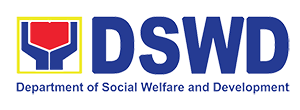
Officials from the National Economic Development Authority (NEDA) and the Department of Finance (DOF) recently visited the provinces of Leyte and Iloilo to learn the implementation of Kapit-Bisig Laban sa Kahirapan-Comprehensive and Integrated Delivery of Social Services (Kalahi-CIDSS), one of the main poverty alleviation programs of the Department of Social Welfare and Development (DSWD).
The learning visit was organized to enable NEDA and DOF to see how Kalahi-CIDSS works at the grassroots level. The Community-Driven Development (CDD) strategy utilized by the Project involves the building up and strengthening of the partnership among the DSWD, the local government units, and the common citizens to ensure its successful implementation.
Given that the visit was also arranged as part of the preparations for the National Community-Driven Development Program (NCDDP), the scaling up of Kalahi-CIDSS into a nationwide scale, it also looked into disaster risk reduction and management (DRRM), one of the essential features of the NCDDP.
This explains the selection of Palo and Tanauan in Leyte and Ajuy in Iloilo as the sites that were visited by DOF and NEDA. These were municipalities hit by Typhoon Yolanda last November.
The officers of NEDA and DOF who participated in the activity lauded how Kalahi-CIDSS was able to mobilize and empower communities, such that the residents become directly involved in the development efforts in their own barangays.
DOF Director Estela Laureano said, “The best thing about Kalahi-CIDSS is that it is able to empower the people.”
This was described by Ramon Falcon, NEDA Chief Social Development Specialist, as “the intangible bayanihan spirit demonstrated through Kalahi-CIDSS,” stating that the visit validated the positive reports they have been receiving about the Project.
Jonathan Anthony Geronimo, the NEDA Senior Social Development Specialist, expounded this by saying, “The Project has outputs and impact, but it was good to see these in the communities.”
He shared how the visit was an eye-opening experience for them. As he said, “Nagkaroon ng itsura ang papel na pinapasa sa amin (The documents that were submitted to us now have a face).”
He went on to describe the passion in the communities as they related how Kalahi-CIDSS has made an impact in their lives.
Geronimo also noted how the Project volunteers were transformed as the new leaders of their barangays when after heeding the clamor of their fellow residents, ran for office and won. They attribute their success to their exposure to the work of Kalahi-CIDSS and the opportunity to demonstrate their competence during the implementation in their barangay.
He went on to compare the two sites in Leyte that they visited – Tanauan, a Kalahi-CIDSS municipality, and Palo, a non-Kalahi-CIDSS area – describing how the residents from the former were more vocal and expressive about their needs and concerns compared to the latter, which he attributed to the capacity-building trainings and their participation in Kalahi-CIDSS.
Both Tanauan and Palo were hit hard by “Yolanda”. Tanauan is about to start its second cycle of Kalahi-CIDSS implementation. Palo, while not currently a Kalahi-CIDSS area, is one of the target areas to be covered under the NCDDP.
Dir. Laureano admitted that she did not think it was possible for CDD to work in areas affected by “Yolanda”, but the familiarization visit proved that it is not only possible but a good platform to promote citizens participation.
She said, “Nung una, inisip namin na hindi kaya, pero nakita namin na kaya pala ng tao (At first, we did not think that they would be able to do this, but we saw that the people actually have the capacity to implement the program).”
Geronimo also shared how community empowerment of Kalahi-CIDSS translated into political, social, and economic participation of the residents from the poorest villages in the Philippines.
He said, “How do you measure community empowerment? You can see it in their political participation and in their social and economic transformation.”
Falcon discussed how he saw the realization of the three objectives of Kalahi-CIDSS – poverty reduction, improved local governance, and community empowerment – in the implementation of the Project in Ajuy, Iloilo.
“CDD is the way to go in order to move forward,” he said.
Falcon also noted how responsive the Kalahi-CIDSS sub-projects were to the needs of the residents. He paid special attention to the seawall sub-project in Barangay Mangorocoro in Ajuy, which the residents credited as what protected their village from being wiped out when TS Yolanda hit the area.
He also mentioned the school building sub-projects that were constructed both in Ajuy and Tanauan, describing these infrastructures, which were built through Kalahi-CIDSS, as “well-designed and executed, structurally sound, and disaster-resistant,” as these buildings withstood the impact of “Yolanda”, compared to the other buildings in both campuses which were severely damaged by the typhoon.
Falcon encouraged DSWD to work closely with other government agencies and the communities to ensure successful implementation, particularly with the scaling up of Kalahi-CIDSS into the NCDDP.
He said, “You work best when there is synergy, collaboration, and complementation.”
In terms of NCDDP’s target to utilize CDD in DRRM, Dir. Laureano said that the experience from the familiarization visit showed her that this was possible, but she cautioned the DSWD to avoid being “too ambitious.”
She said, “NCDDP is a good way for disaster rehabilitation, but start small,” adding that large-scale infrastructure such as farm-to-market roads and hospitals should be best left to the other national government agencies responsible for these.
Like Falcon, she encouraged DSWD to work in closer coordination with other government agencies.
NCDDP is targeted for implementation by the second quarter of 2014. The program will be implemented by DSWD in partnership with different national government agencies.###


